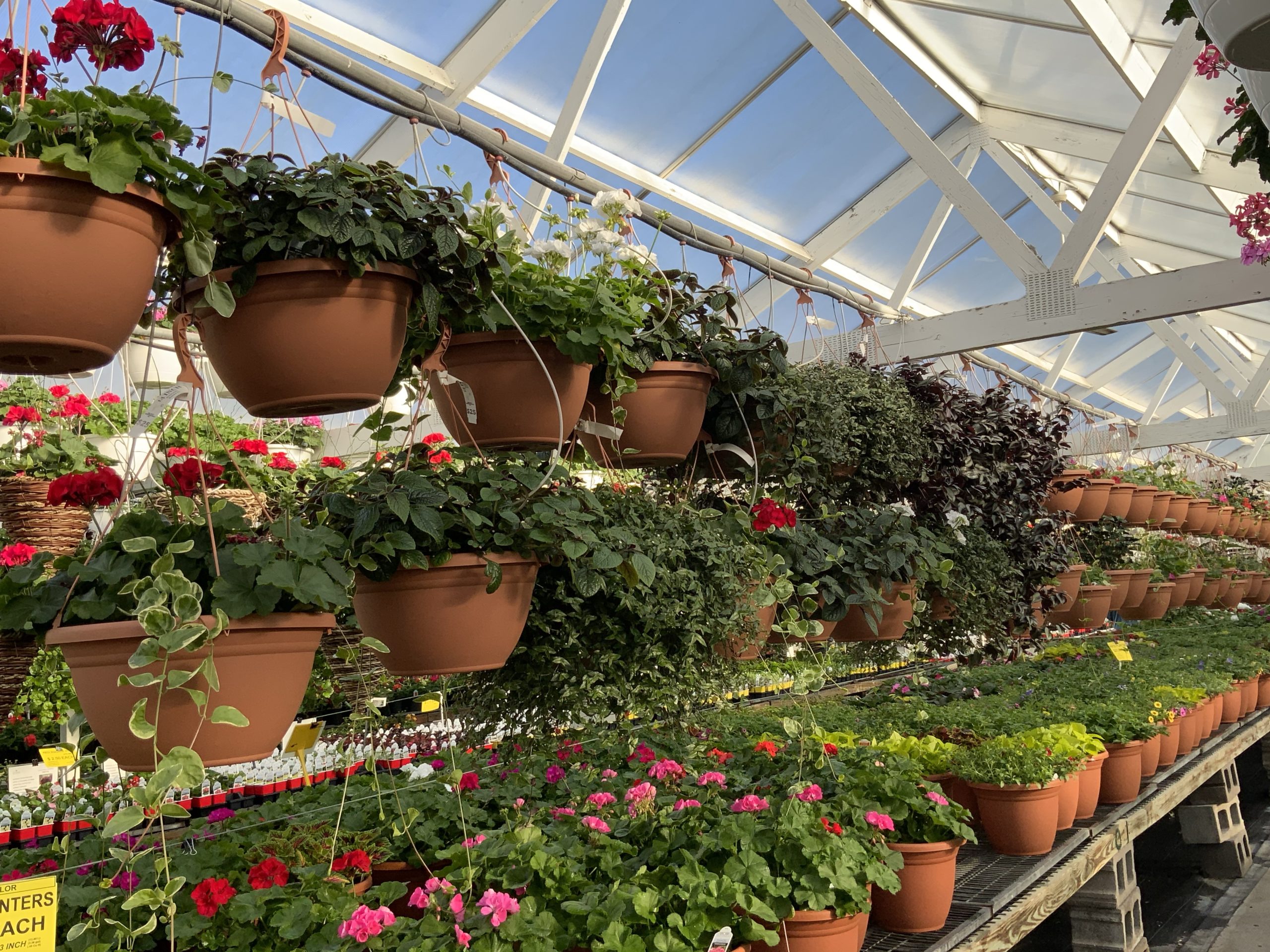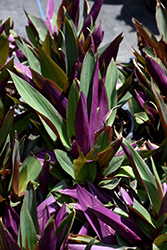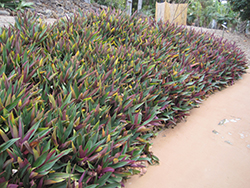
Plant Finder
Height: 12 inches
Spacing: 18 inches
Sunlight:
![]()
![]()
Hardiness Zone: 8b
Other Names: Oyster Plant, Boatlily, Moses-in-a-basket
Description:
This selection is an excellent plant for borders, rock gardens, and massed as groundcover; a year-round bloomer with beautiful white flower clusters nestled in purple bracts; dense mounded foliage is mid-green and attractive; may be invasive in warm areas
Ornamental Features
Moses In The Cradle features showy cymes of white flowers with purple bracts at the ends of the stems from early spring to late winter. Its sword-like leaves remain dark green in color with curious purple undersides throughout the year.
Landscape Attributes
Moses In The Cradle is an herbaceous evergreen perennial with an upright spreading habit of growth. Its relatively fine texture sets it apart from other garden plants with less refined foliage.
This is a relatively low maintenance plant, and is best cleaned up in early spring before it resumes active growth for the season. It is a good choice for attracting butterflies to your yard, but is not particularly attractive to deer who tend to leave it alone in favor of tastier treats. It has no significant negative characteristics.
Moses In The Cradle is recommended for the following landscape applications;
- Mass Planting
- Border Edging
- General Garden Use
- Naturalizing And Woodland Gardens
Planting & Growing
Moses In The Cradle will grow to be about 12 inches tall at maturity, with a spread of 24 inches. When grown in masses or used as a bedding plant, individual plants should be spaced approximately 18 inches apart. It grows at a fast rate, and under ideal conditions can be expected to live for approximately 10 years. As an evegreen perennial, this plant will typically keep its form and foliage year-round. As this plant tends to go dormant in summer, it is best interplanted with late-season bloomers to hide the dying foliage.
This plant does best in full sun to partial shade. It prefers to grow in average to moist conditions, and shouldn't be allowed to dry out. It is not particular as to soil type or pH. It is highly tolerant of urban pollution and will even thrive in inner city environments. Consider applying a thick mulch around the root zone in winter to protect it in exposed locations or colder microclimates. This species is not originally from North America. It can be propagated by division.

